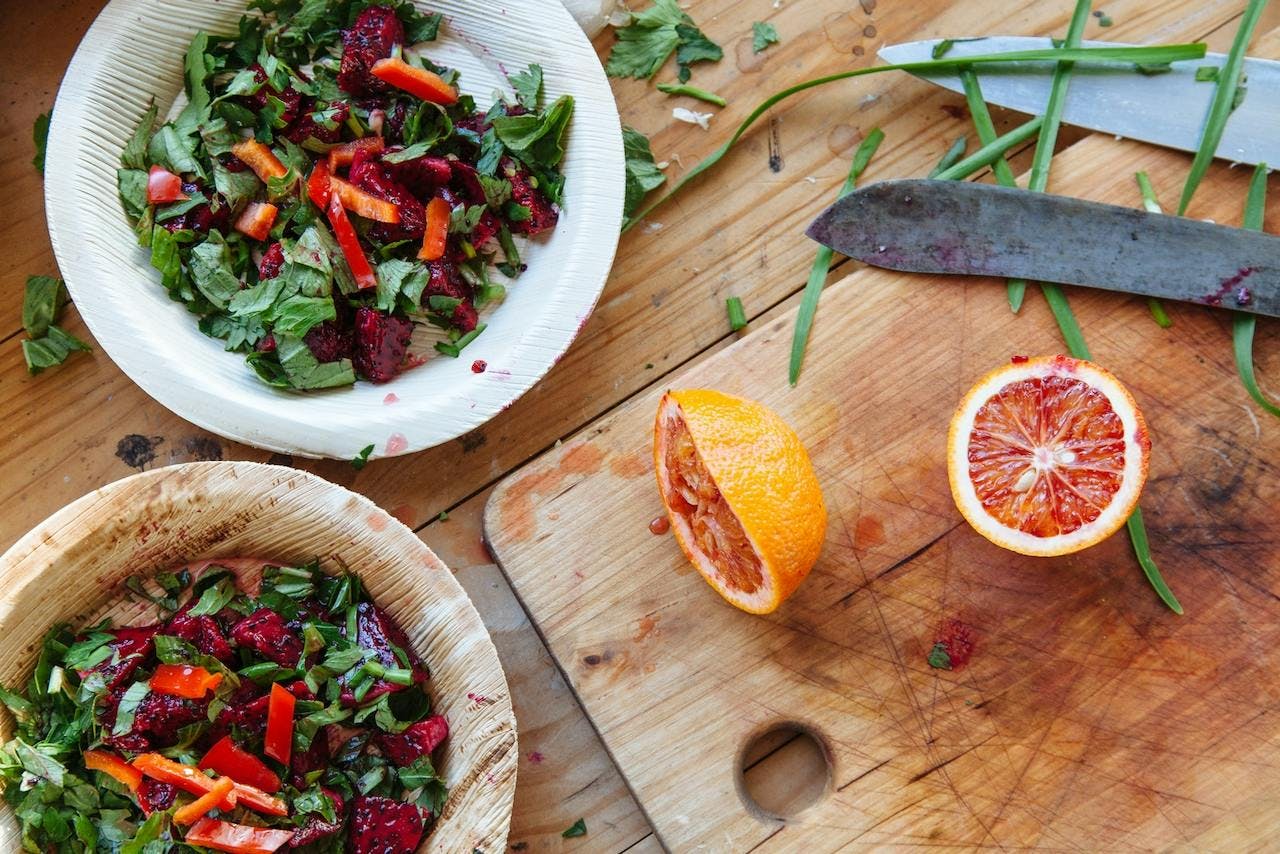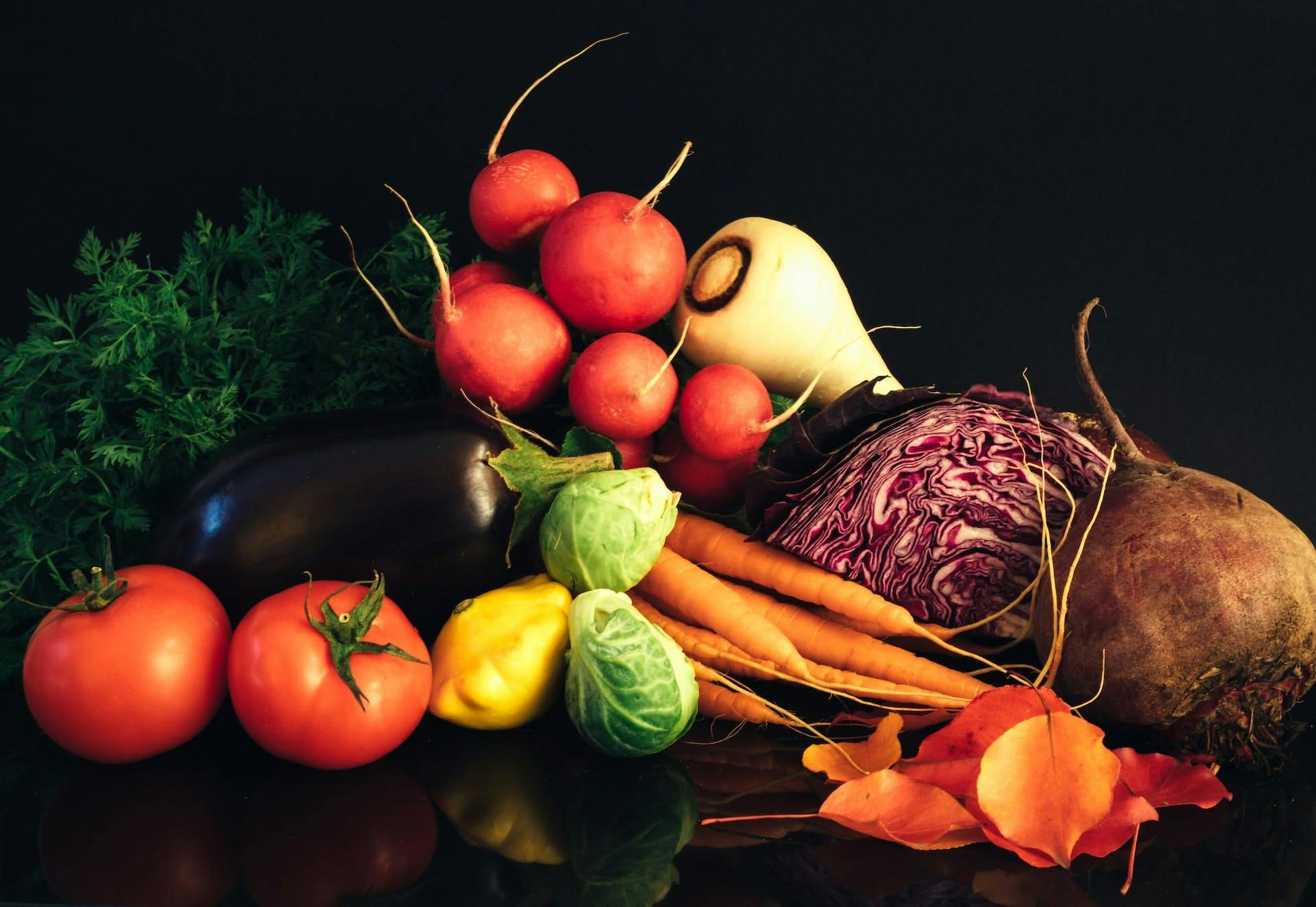Heart health and metabolic health are closely tied, and nutrition is a key component of improving (or harming) your heart health.
The challenge we’re faced with today is that the global food environment is becoming more Westernized, which research shows increases inflammation, decreases the production of proteins in our body that fight inflammation, and has been one of the driving factors behind the rise of the global obesity epidemic [1].
While different types of fat, protein, and carbs can all support heart health, there’s a crucial component missing from the conversation: micronutrients. Many people aren’t even aware of the critical evidence behind specific micros and their effects on heart health and blood glucose.
In this article, we’re diving into five lesser-known micronutrients that are essential for heart health, and how you can add more of them to your diet.
1. Omega-3s
Omega-3 fatty acids, also known as omega-3s, are a type of polyunsaturated fatty acid associated with heart health.
While there are a variety of fatty acids, the types of omega-3 fatty acids that promote heart health are alpha-linolenic acid (ALA), eicosapentaenoic acid (EPA), and docosahexaenoic acid (DHA) [2].
Omega-3s can help lower high triglyceride levels (high triglyceride levels being a risk factor for metabolic syndrome), reduce inflammation, and prevent blood clots [2, 4]. One meta-analysis found that intake of omega-3s decreased instances of heart attack, heart disease, and death caused by a cardiac event [5].
How to get more omega-3s
ALAs are essential fatty acids, which means that your body can’t make them from other molecular components, and you need to eat sources of ALAs to get a sufficient amount. Good sources of ALAs include tofu, walnuts, pumpkin seeds, flax seeds, edamame, and olive oil.
Your body can make EPA and DHA from ALAs, but only a very small amount. It’s important to eat good sources of EPAs and DHAs, which are found mostly in seafood like salmon, mackerel, tuna, shrimp, sardines, and seaweed.
2. Magnesium
Magnesium is a micronutrient that is crucial for heart health. It is used to support over 300 chemical reactions within the body that are essential for keeping you alive, including reactions that deal with blood pressure control, blood sugar regulation, and cell metabolism [6, 7].
In terms of heart health, magnesium is essential for proper electrical signaling and muscle contractions of the heart [7]. Low levels of magnesium are associated with an increased risk of heart health problems.
Studies show that dietary magnesium can reduce the risk of stroke, heart failure, and diabetes — suggesting that heart health and glucose management can be improved by eating more magnesium [8].
How to get more magnesium
Good sources of dietary magnesium include pumpkin seeds, dark leafy green vegetables, rolled oats, cashews, almonds, peanuts, whole wheat bread, and avocados.
3. Vitamin D
Vitamin D can improve bone and heart health and is critical for the absorption of phosphorous and calcium [9].
Research shows that low levels of vitamin D increase the risk of CVD [10]. However, science also shows that going overboard with supplements is unnecessary if you think you’re not getting enough Vitamin D, as supplementation of vitamin D does not improve heart health [11, 12].
So what does this mean?
Low vitamin D is associated with poor heart health, and there are reasons that people with normal levels of vitamin D might see lower instances of heart disease [10]. This may be due to spending more time outside exercising, which supports cardiac health, and simultaneously synthesizing vitamin D through the skin. It’s also true that healthy diets, which also tend to be associated with better heart health, contain vitamin D.
How to get more vitamin D
Regardless, talking with your doctor and understanding your Vitamin D status is a good idea for heart health. Eating high-vitamin D foods will ensure you’re not putting your heart at risk. Foods high in vitamin D include organ meat, egg yolks, tuna, swordfish, kale, spinach, collards, and white beans.
4. Curcumin
Curcumin is a bright yellow-orange polyphenol that gives turmeric its color. It is well known to have anti-inflammatory properties that fight oxidative stress, which can cause damage and premature aging in cells [13].
Curcumin has also been linked with protection against heart disease and may help improve glycemic control, as one meta-analysis showed it was effective in lowering A1C, fasting blood glucose, and fasting insulin levels [14, 5].
How to get more curcumin
While turmeric is the primary food item that is high in curcumin, curry dishes and mango ginger (a type of bright orange ginger named for its color) also contain curcumin. Try adding turmeric to vegetables, rice, and eggs to increase your curcumin intake.
Eating curcumin alongside a healthy fat (like avocado or olive oil) or black pepper can help increase your absorption of curcumin.
5. Quercetin
Quercetin is a type of pigment found in plants. Quercetin is high in antioxidants and has been linked to protecting and improving heart health.
A meta-analysis of randomized control trials (the gold standard of research methods) found that quercetin supplementation helped to significantly reduce blood pressure [16]. In a study of patients with metabolic syndrome, quercetin supplementation led to a reduction in LDL cholesterol and markers of inflammation [17].
Quercetin may help prevent the development of plaque in the arteries due to its high levels of antioxidants and anti-inflammatory properties, which may prevent heart disease and heart attacks [18].
How to get more quercetin
Good sources of quercetin to include in your diet are fruits and vegetables like broccoli, kale, blueberries, citrus fruits, apples, dark cherries, onions, grapes, and parsley.
Key Takeaways
Lean protein, complex carbohydrates, fiber, and sources of healthy fats are all essential for maintaining heart and metabolic health. Focusing on micronutrients that are well-studied and known to support heart health can help you build a heart-healthy plate at every meal.
- Omega-3s are essential fatty acids that prevent arrhythmia and blood clots, lower cholesterol, and reduce inflammation. Seafood and nuts are great sources of omega-3s.
- Magnesium is a micronutrient that is essential for hundreds of metabolic reactions, including many that relate to the signaling and pumping of the heart. Get more dietary magnesium through dark leafy green vegetables, rolled oats, and avocados.
- Low Vitamin D is associated with increased risk of cardiovascular risk, so get your levels checked with your doctor if possible, and get outside and get moving to synthesize more vitamin D.
- Curcumin is a polyphenol that gives turmeric its color and is key for blood sugar regulation and lowering blood pressure.
- Quercetin is a plant compound that helps lower blood pressure, lower LDL cholesterol, and prevents arterial plaque buildup. It can be found in dark green/purple fruits and vegetables.
References:
- https://www.ncbi.nlm.nih.gov/pmc/articles/PMC7721435/
- https://www.ahajournals.org/doi/full/10.1161/CIRCULATIONAHA.114.015176
- https://pubmed.ncbi.nlm.nih.gov/17876194/
- https://www.ahajournals.org/doi/10.1161/01.cir.0000038493.65177.94
- https://www.sciencedirect.com/science/article/abs/pii/S0735109722071066?via%3Dihub
- https://openheart.bmj.com/content/5/2/e000775
- https://pubmed.ncbi.nlm.nih.gov/29793664/
- https://bmcmedicine.biomedcentral.com/articles/10.1186/s12916-016-0742-z
- https://www.hsph.harvard.edu/nutritionsource/vitamin-d/
- https://academic.oup.com/eurheartj/article-abstract/43/18/1731/6448753
- http://nejm.org/doi/full/10.1056/NEJMoa1809944
- https://www.frontiersin.org/articles/10.3389/fphys.2021.742425/full
- https://www.ncbi.nlm.nih.gov/pmc/articles/PMC5664031
- https://pubmed.ncbi.nlm.nih.gov/28274852/
- https://www.ncbi.nlm.nih.gov/pmc/articles/PMC5310664/
- https://www.ahajournals.org/doi/10.1161/JAHA.115.002713
- https://www.tandfonline.com/doi/abs/10.1080/10408398.2019.1604491
- https://www.hindawi.com/journals/ecam/2020/5926381/


